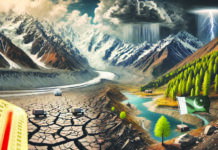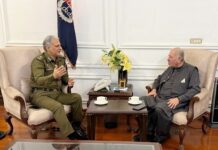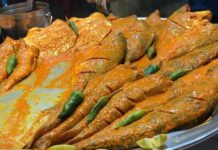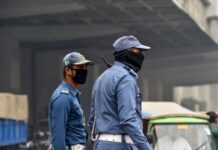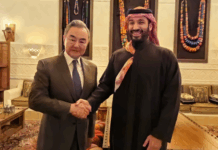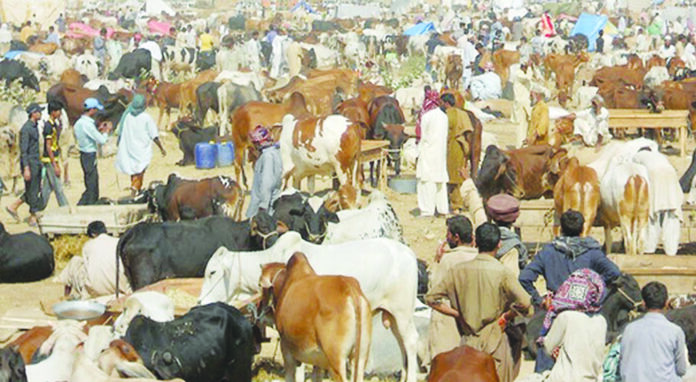Religion permits slaughtering female cattle as sacrificial animals on Eid ul Adha, and there is no preference for either a female or male animal from religious perspective. Many people choose a young heifer solely because they believe the meat is more tender and probably tastier. This assumption, even if correct, is causing a huge damage to our livestock sector.
For a long time, Pakistanis lived under the delusion that natural gas in Pakistan is an everlasting resource which will never end. And then the nation got hit by the reality that the commodity was almost depleted and was to soon run out completely.
Similarly, food availability in Pakistan is depleting fast too. For many Pakistanis, blessings like sufficient food and water are everlasting gifts from the Almighty that shall never end. But He too despises wastefulness and ungratefulness and expects humans to be responsible with what has been granted to them.
Just like we were unaware of natural gas running out, we are unaware of another disaster that is about to hit us hard, food shortages. Unlike natural gas, the disaster in the food sector is mostly, if not entirely, manmade. Government’s indifferent attitude towards the problem and its incapacity to address the root causes is the biggest problem.
Meat and dairy segments are most vulnerable. Prices of both meat and milk have been going through the roof in Pakistan. We are wrongly made to believe that this price hike is either due to hefty margins kept by farmers or by the retailers. In reality the prices are going up only because the cattle population in Pakistan is dwindling at an alarming pace. And the main cause of this drop in our livestock population is premature slaughtering of productive female cattle, mainly cows and buffaloes.
A cow or a buffalo in its lifetime can potentially produce eight to ten offspring and about 20,000 litres of milk (worked out at low yields prevalent in the country). If half of future off springs that would have been born to the prematurely slaughtered cow or buffalo were assumed to be females, then they would have also produced more offspring and more milk.
So slaughtering a cow or buffalo prematurely puts an end to future production of livestock and retards the natural growth process. This genocide of cattle has been taking place unchecked in Pakistan for decades. Presumably, there are laws that prohibit slaughtering of under aged and productive cattle for meat purposes, but the law seems to be completely disregarded by all concerned.
Similarly, if half of the offspring are assumed to have been male and each male was consumed for meat at prime age when its carcass weighed about 100 kg, 500 kg of meat is lost in future production with every premature slaughter of a female cow or buffalo. Every day, thousands of productive female cattle are slaughtered in Pakistan.
According to estimates available on the internet, about 200,000 cows (it is assumed the definition includes both cows and bulls, and the term cow is used only to differentiate them from goats, sheep and camels) are slaughtered on Eid ul Adha in Pakistan. Assuming half of these are females of productive age, three billion litres of future milk production and 75 million kg of future meat production is lost in a single day. Instead, if all male cattle are slaughtered as sacrificial animals, our future productivity remains intact.
Additionally, even when buying meat from the market for usual daily consumption, meat of female cattle should be completely boycotted. After all, the most tender steaks in the world’s most expensive restaurants are prepared using meat from male cattle.
This simple maths should be enough to indicate the quantum of milk and meat loss in future production on a daily basis when productive female cattle are prematurely slaughtered for meat.
A big problem is that the official data continues to present a rosy picture. According to the National Bureau of Statistics, the cattle population in Pakistan is not only one of the largest in the world, but it is growing at a fairly satisfactory pace too. Interestingly, a countrywide real time livestock census has not taken place in decades. The data is therefore, published by extrapolating the growth rate between last two censuses and applying that to the previous year’s number, that too was created using the same faulty method. Variables like increased reckless slaughtering of productive cattle and rampant smuggling are not factored into while mathematically producing the number.
This is the reason why it is absolutely critical that female cattle are not slaughtered unless the animal is rendered unproductive for the production of milk and calves due to age, injury or illness. No responsible nation in the world allows premature slaughtering of productive female cattle as ruthlessly as it is done in Pakistan. Many people do this unknowingly and it is hoped that once the issue has been highlighted to them, they would avoid slaughtering female cattle as sacrificial animals on Eid ul Adha.
Additionally, even when buying meat from the market for usual daily consumption, meat of female cattle should be completely boycotted. After all, the most tender steaks in the world’s most expensive restaurants are prepared using meat from male cattle.
There is an urgent need to develop a separate meat sector in the country as absence of separate meat subsector is the prime reason why dairy females are consumed for meat. But it seems we are determined never to learn from our mistakes and keep destroying our future (as well as our present). Educating consumers directly is probably a better option when policy makers are insensitive to such grave issues.


